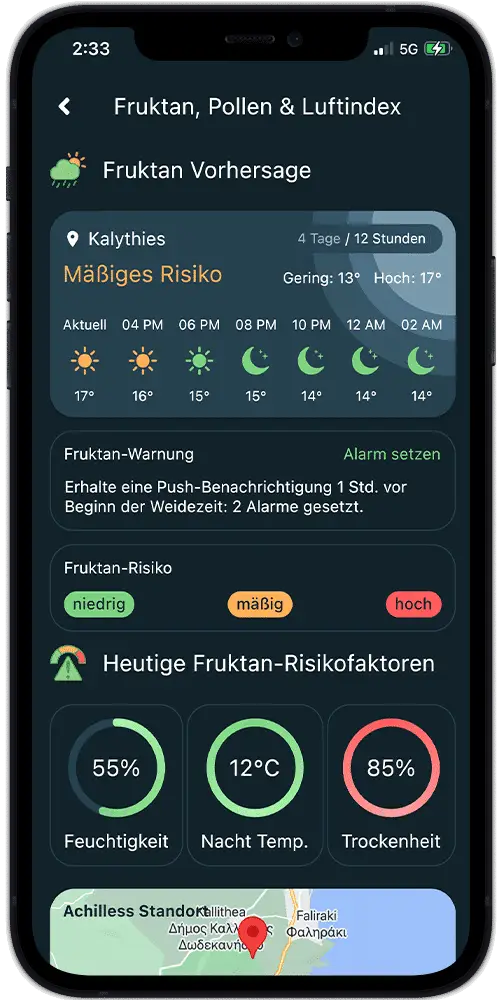
Watch out for sugar in the grass! How to protect your horse from fructan
Green, juicy, dangerous? Pasture grass, the favorite feed of many horses, harbors a hidden danger: fructan, also known as sugar in grass. This complex sugar can be a risk for horses with metabolic problems and can even trigger laminitis. But don’t worry, with the right knowledge and a few simple strategies you can control your horse’s fructan intake and protect their health. This article shows you how!
Table of contents
Fructan - What is it, and why is it dangerous?
Imagine if horses could hoard sweets – that’s exactly what grasses do with fructan! It’s their way of storing energy, and as a sugar in grass it acts as a temptation for our animals. Healthy horses can easily break down fructan in the digestive tract. However, for horses with metabolic disorders such as Equine Metabolic Syndrome (EMS), insulin resistance or Cushing’s disease (PPID), this sugar quickly becomes a problem. Their body cannot process fructan efficiently, which can lead to a cascade of unfavorable reactions.
Fructan is fermented by bacteria in the large intestine. In horses with metabolic disorders, this process can become unbalanced: The bacteria multiply explosively, produce large quantities of lactic acid and upset the pH value in the intestine. The consequences: Disturbed intestinal flora, damage to the intestinal mucosa and the release of endotoxins that trigger inflammatory reactions. In the worst case, this can lead to laminitis, an extremely painful disease of the hooves.
The fructan calendar: when should you be careful?
The sugar in grass, i.e. the fructan content, fluctuates greatly throughout the year and even within a day. These fluctuations are influenced by factors such as sunlight, temperature and water availability.
- Spring: Fresh sunshine, cool temperatures and rapid growth mean high fructan levels.
- Autumn: Similar conditions to spring ensure high fructan storage in the grass.
In summer, the fructan content in the grass can vary depending on the weather. Hot, dry periods can drive fructan levels up, while in winter the levels are at their lowest.
Fructan trap: Time of day counts too!
Not only the time of year, but also the time of day influences the sugar in the grass. In the morning, before the sun rises, the fructan value in the grass is at its lowest. It reaches its peak around midday, when the sun is shining fully. The fructan level drops again in the late afternoon.
Pasture management: How to protect your horse
With the right knowledge about the fructan fluctuations in the grass, you can control your horse’s fructan intake in a targeted manner. Here are a few tips:
- Horsesat risk: Horses with EMS, insulin resistance, Cushing’s disease or laminitis, but also overweight horses, benefit from low-fructan management.
- Slow acclimatization: In spring, only introduce the pasture grass gradually.
- Plan grazing times cleverly: let your horse graze early in the morning or late in the evening when the sugar in the grass and therefore the fructan content is lower.
- Take feeding breaks: Limit grazing and offer alternative feed sources, such as low-fructan hay.
- Use digital helpers: The Happie Horse app provides you with location-specific information on the fructan content in the grass so that you can optimally manage grazing times.
The app’s Fructan Risk Management feature also helps you to monitor the fructan content in the grass. This allows you to minimize the risk and respond specifically to your horse’s needs.
How Does Fructan Risk Management Work?
- Input your horse’s data into the Happie Horse App, select the type of grass, and specify the grazing times.
- The app calculates the fructan content based on weather data and sends you a push notification if the laminitis risk increases.
The app provides the following alerts:
- Green: The fructan content is low, low risk.
- Yellow: Moderate risk, increased caution.
- Red: High fructan content, grazing should be restricted.
If the Fructan Risk Management feature is red, you can use the app to restrict grazing and consider alternative feed sources to protect your horse.
Daily grazing time
Note and observe your horse's daily grazing time, and display the past grazing time in a table.
Fructan risk
Check the daily fructan risk at your horse's location and keep an eye on your horse's health. See current fructan risk factors.
Get push notifications
Receive notifications about specific fructan risks based on your selection
Location
You can use the location function to display your current location and the weather, and set different locations for different horses.
Weather forecast
Monitor the weather at your horse 's current location. Choose between a 12-hour and a 4-day forecast.
Past grazing times
Get an overview of past grazing times and fructan risks. Perfect for the grazing or grazing period.
Additional tools in the Happie Horse app
Alongside Fructan Risk Management, the Happie Horse App offers additional helpful features:
- Feeding protocol: Keep track of the feeding and adapt it to the fructan content of the feed.
- Health data: Track important health parameters such as your horse’s pulse and temperature.
- Calendar function: Schedule important vet and farrier appointments to ensure your horse’s health status.
Conclusion: Knowledge is the best protection!
Fructan in grass is a serious challenge for horse owners. But with the right knowledge, well thought-out pasture management and the support of digital aids such as the Happie Horse app, you can control your horse’s fructan intake and protect its health in the long term.




